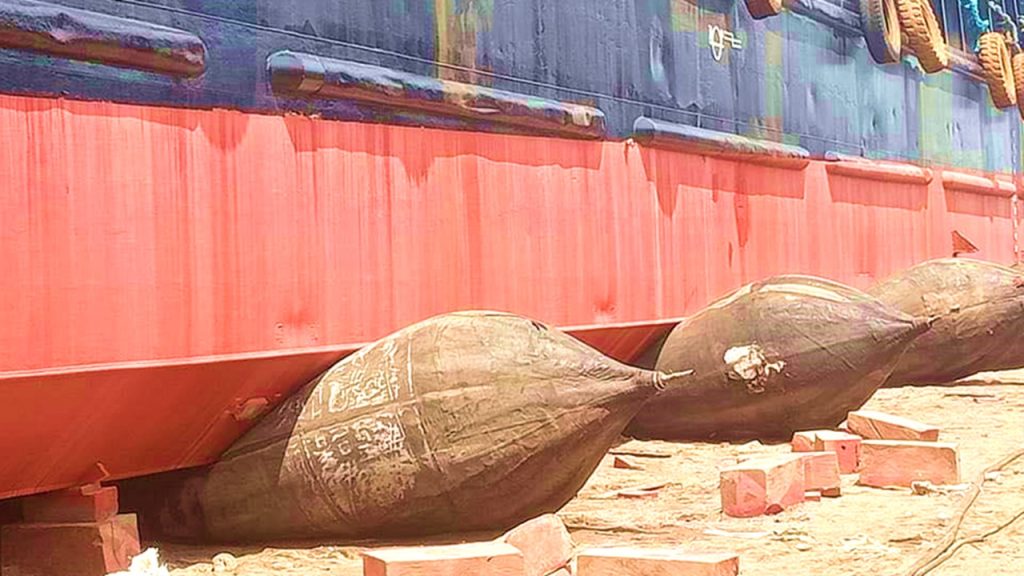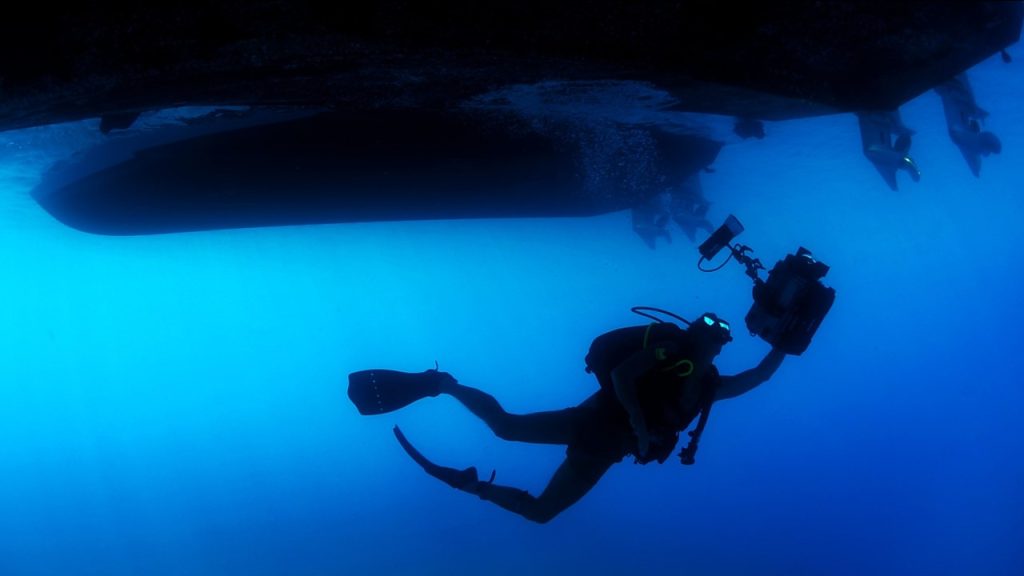Imagine witnessing an extraordinary feat where behemoth-sized ships seemingly defy nature’s laws by floating above solid ground. This captivating sight is not some fantastical illusion but rather an essential practice known as dry docking. Nestled among the mesmerizing archipelago of the Philippines lies a network of specialized facilities dedicated to lifting mammoth vessels from the water onto land for ship repairs and maintenance purposes. In this article, we delve into the captivating world of proper dry docking procedures in one of Asia’s maritime powerhouses, uncovering why it is both an art form and a crucial aspect in ensuring safe navigation across Philippine waters.
Click here to view our dry docking capabilities in Tanza, Cavite, Philippines.
The Importance of Proper Dry Docking Procedures in the Philippines
Proper dry docking procedures are of utmost importance in the Philippines, not only to ensure the safety of vessels but also to maintain the country’s reputation as a reliable maritime hub. The Philippines boasts a thriving shipbuilding and repair industry, with numerous dry docks scattered across its archipelago. However, without adhering to strict protocols and guidelines during dry docking processes, there is an increased risk of accidents and environmental damage.
One crucial aspect of proper dry docking procedures is ensuring that vessels are thoroughly inspected for any structural damages or maintenance requirements. This meticulous examination helps identify hidden defects that may compromise the vessel’s integrity during its time at sea. Additionally, it allows for necessary repairs or upgrades to be conducted efficiently, preventing any potential mishaps in the future.
Moreover, following proper procedures while handling hazardous materials onboard vessels during dry docking is vital from both safety and environmental perspectives. Adhering to strict waste disposal regulations prevents harmful substances from contaminating coastal waters and marine life habitats. By implementing stringent measures such as proper containment and treatment methods for hazardous materials like oil or chemicals, we can safeguard our marine ecosystems while maintaining a sustainable shipbuilding industry in the Philippines.
Prioritizing proper dry docking procedures is essential in the Philippines, not only for vessel safety but also for ecological preservation. By conducting thorough inspections and adhering to strict waste management guidelines, we can ensure that our maritime industry remains reliable while protecting our precious coastal environment. Investing time and resources into these procedures demonstrates our commitment to sustaining a responsible shipbuilding sector that considers the long-term impact on our oceans. Dry docking in Tanza, Cavite, is a crucial process that allows for necessary repairs and maintenance of LCTs, barges, tugboats, and other vessels, ensuring their continued seaworthiness. However, it also presents an opportunity to implement environmentally friendly practices.

When and Why Dry Docking is Necessary for Philippine Vessels
Dry docking is a necessary procedure for Philippine vessels to ensure their proper maintenance and repair. This process involves taking the ship out of the water and placing it in a specially designed dock for inspection, cleaning, and repairs that cannot be done while the ship is still at sea. The decision of when to dry dock a vessel depends on various factors, such as the age of the ship, its usage intensity, and any reported issues.
One significant reason why proper dry docking in Tanza, Cavite, is crucial for Philippine vessels is to address potential damage caused by wear and tear. Over time, a ship’s hull can accumulate biofouling, which not only affects its performance but also poses environmental risks. Proper dry docking allows for thorough cleaning of the hull to remove these unwanted organisms, ensuring smoother sailing and efficiency in fuel consumption.
Furthermore, proper dry docking also provides an opportunity to inspect and repair any structural or mechanical damages that may have occurred during normal operations. From corrosion on metal surfaces to malfunctioning machinery systems, these issues can be properly addressed during dry docking with greater ease since they are more accessible outside of the water.
Proper dry docking plays a vital role in maintaining Philippine vessels’ safety standards, preventing the deterioration of ships’ functionality over time while ensuring compliance with international regulations on maritime operations. By incorporating this regular maintenance practice into their schedules, shipowners can extend their vessels’ lifespan significantly while reducing unforeseen accidents at sea.

Key Steps to Follow During Dry Docking in the Philippines
One of the most crucial steps to follow during proper dry docking in Manila, Cebu, and Zambales is to carry out a thorough inspection of the vessel’s hull. This involves checking for any signs of damage, such as cracks or corrosion, and ensuring that all protective coatings are intact. It is essential to address and repair any issues before proceeding with other maintenance tasks, as neglecting these problems could lead to further damage and costly repairs in the future.
Another key step is to develop a comprehensive work plan outlining the specific tasks and timelines for each job required during dry docking in Navotas, Batangas, and Subic Bay. This plan should consider factors such as manpower availability, material procurement, and anticipated weather conditions. By having a well-organized work plan in place, shipyard operators can maximize productivity and minimize downtime during dry dock operations.
Lastly, it is vital to prioritize safety measures throughout the entire dry docking process. This includes providing appropriate equipment and training for workers involved in various aspects of maintenance and ensuring compliance with health and safety regulations at all times. Implementing proper safety protocols not only protects workers but also safeguards assets from potential accidents or incidents that can occur during the dry docking period.
By following these key steps—conducting a meticulous hull inspection, developing a comprehensive work plan, and prioritizing safety measures—Filipino ship owners can ensure an efficient and successful proper dry docking experience in which the vessel is thoroughly inspected, maintained, and repaired.

Here are the Five Proper Dry Docking Procedures in the Philippines:
1. Preparations: Inspection and Assessing the Vessel’s Condition for Proper Dry Docking Procedures
Before a vessel is ready for dry docking in Laguna, Mauban Quezon, and Davao, it is crucial to conduct a thorough inspection and assess its condition. This step ensures that any needed repairs or maintenance work can be identified and addressed during the dry docking process.
First, an inspection team will carefully examine the hull to check for any signs of damage, such as cracks, corrosion, or structural issues. They will also evaluate the condition of essential parts like propellers, rudders, and sea chests.
One important aspect of this assessment is determining whether there are any potential environmental risks associated with the vessel. For example, if there are areas on the hull where anti-fouling paint has eroded away, it may indicate a risk of invasive species transfer between different marine environments. Likewise, if fuel or oil leaks are detected during the inspection, immediate action must be taken to prevent any pollution in sensitive aquatic habitats. By thoroughly inspecting and assessing a vessel’s condition before dry docking procedures commence, these potential risks can be effectively mitigated.
Furthermore, to address environmental concerns, inspecting and assessing a vessel’s condition allows for better planning of repair work during proper dry docking. The information gathered from the inspection helps determine which areas need attention and what materials or equipment will be required for repairs or maintenance tasks. This preparation ensures that the necessary resources are available when the vessel enters the dry dock so that work can proceed efficiently without unnecessary delays. Ultimately, by investing time in inspections and assessments prior to proper dry docking procedures in the Philippines (or anywhere else), Filipino ship owners can save both time and money in the long run. By identifying and addressing any potential issues before they become major problems, Filipino ship owners can avoid costly repairs or unplanned downtime during proper dry docking.
In addition to planning repair work, inspections and assessments also play a crucial role in ensuring the safety of the vessel and its crew. By thoroughly examining all critical areas of the ship, experts can identify any structural weaknesses or equipment malfunctions that could pose a risk during operation. This proactive approach to maintenance helps prevent accidents and ensures that the ship remains in compliance with all regulatory standards. Regular inspections also help to maintain the overall efficiency and performance of the vessel, ensuring that it operates at its optimal level.
Furthermore, thorough assessments and inspections allow Filipino ship owners to prioritize repairs and maintenance tasks based on urgency and severity. By identifying critical issues early on, they can allocate resources effectively and schedule repairs during convenient times without disrupting crucial operations or interrupting valuable cargo shipments.
Not only do these proactive measures save time by preventing unexpected breakdowns, but they also save money by reducing the need for costly emergency repairs and minimizing downtime.
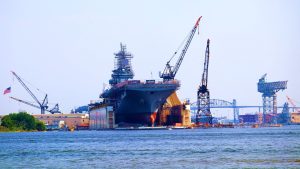
2. Safety Measures: Ensuring a Secure Environment as Part of Proper Dry Docking Procedures
Safety is a crucial aspect when it comes to proper dry docking procedures in the Philippines. Ensuring a secure environment is not only essential for the workers involved but also for the smooth and efficient execution of the tasks at hand. One important safety measure is conducting thorough risk assessments before any work begins. Identifying potential hazards and implementing appropriate mitigation measures can significantly reduce accidents and injuries during dry docking projects.
Another safety measure that should be emphasized is proper training and supervision of all personnel involved in the dry docking process. This includes experienced workers and newcomers to ensure that everyone is well-equipped with the knowledge of safety protocols, emergency procedures, and equipment handling. Regular drills should also be conducted to familiarize workers with these protocols in case of an actual emergency situation.
In addition to training, it is crucial to provide workers with adequate personal protective equipment (PPE). This includes hard hats, safety goggles, gloves, steel-toed boots, and reflective vests, among others. These PPEs serve as a line of defense against potential hazards such as falling objects or exposure to harmful substances. Regular inspection of PPEs should be done to ensure they are in good condition and to replace any damaged or worn-out gear immediately.
By incorporating robust safety measures into proper dry docking procedures in the Philippines, we can create a secure environment where both workers and project stakeholders can rest assured, knowing that their well-being is prioritized. These preventive steps not only mitigate risks but also contribute to increased productivity by minimizing accidents and delays caused by mishaps. It’s important to remember that safety should always be a top priority in any workplace, and the dry docking industry is no exception.
In addition to providing appropriate PPEs, it is crucial for employers to educate their workers on the proper usage and maintenance of these protective gear. Training programs should be implemented to ensure that employees understand how to correctly wear and use their equipment, as well as the importance of regular inspection.
Furthermore, communication plays a vital role in maintaining safety during proper dry docking procedures. Clear instructions and guidelines should be communicated to all workers involved in the process, ensuring that everyone is aware of their roles and responsibilities. This can be done through regular safety meetings or toolbox talks, where any potential hazards or risks are discussed.
It is also important to establish a strong reporting system in the workplace. Employees should feel comfortable reporting any safety concerns or near misses they may have encountered during proper dry docking operations. By encouraging an open and transparent culture, employers can address these issues promptly and take necessary actions to prevent future incidents.

3. Execution: Entering the Dry Dock and Securing the Vessel as Part of Proper Dry Docking Procedures
Entering the dry dock and securing the vessel is a critical step in proper dry docking procedures in the Philippines. It requires precision and skill to ensure the safety of both the ship and the workers involved. As the vessel enters the dry dock, it must be maneuvered carefully to avoid any damage or mishaps. This process involves skilled navigation and communication between the ship’s crew, dock operators, and tugboat operators.
Once inside the dry dock, securing the vessel becomes paramount. The ship must be properly positioned using various mooring techniques such as ropes, chains, or wires to prevent any movement during maintenance or repair work. Additionally, depending on the size of the vessel being docked, additional supports such as keel blocks or shore planks may need to be installed to provide stability.
It is crucial that these steps are executed flawlessly, as even a minor miscalculation can have disastrous consequences for both human life and infrastructure. Therefore, trained professionals with extensive knowledge of proper dry docking procedures are required for this important task. Safety protocols should always be strictly adhered to ensure a smooth, proper dry docking experience that minimizes risks while maximizing efficiency.
So, the next time you see a ship entering a dry dock in the Philippines, remember how crucial it is for every little detail of execution to be meticulously planned and carried out by experts prioritizing safety above all else.
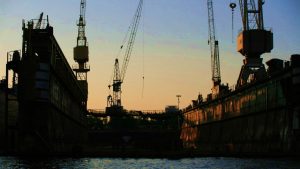
Ship Cleaning and Preparation for Repair Work: Proper Dry Docking Procedures
When it comes to proper dry docking procedures in the Philippines, one important step that cannot be overlooked is the cleaning and preparation for repair work. Before any repairs can take place, it is crucial to ensure that the vessel’s surfaces are clean and free from any contaminants. This includes removing marine growth, such as barnacles and algae, from the hull and propeller blades.
Cleaning is not only necessary for aesthetic reasons but also for ensuring proper adhesion of coatings and paints. If there is any existing paint or coating that is peeling or deteriorating, it must be completely removed before new materials can be applied. This allows for a better surface and ensures longevity in the newly applied coatings.
Additionally, preparation work also involves inspecting the structure of the vessel thoroughly. Any signs of corrosion or damage must be identified and addressed promptly during this stage. It may involve repairs to corroded areas or strengthening weak points through welding or other methods.
By prioritizing cleaning and adequate preparation before repair work begins during proper dry docking procedures in the Philippines, Filipino ship owners can extend their vessels’ lifespan while maintaining their performance capabilities at sea. It sets a solid foundation for effective repairs by allowing optimal conditions for coating application and addressing structural issues promptly. Investing time into these preparatory steps proves essential, as they contribute significantly to reliable vessel maintenance strategies throughout its life cycle.
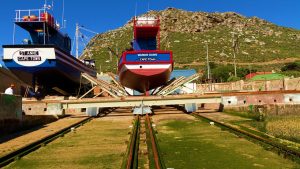
Actual Ship Repairs, Vessel Maintenance, and Inspections: Dry Docking Procedures in the Philippines
Actual repairs, maintenance, and inspections are critical aspects of the proper dry docking procedures in the Philippines. During the proper dry docking process, a vessel undergoes several repairs and maintenance tasks to ensure its seaworthiness and compliance with maritime regulations. This includes repairing any structural damage, replacing or refurbishing essential equipment such as navigation systems or engine components, and conducting thorough inspections to identify any hidden issues.
One of the key benefits of proper dry docking is that it provides an opportunity for ships to undergo comprehensive inspections that may not be possible while they are at sea. These inspections help in identifying potential problems before they escalate into major issues that can compromise the safety of the vessel. From checking for corrosion or damages on the hull’s surface to inspecting electrical systems and machinery, this meticulous examination ensures that all necessary repairs and maintenance are done effectively.
In addition to regular inspections and repairs during proper dry docking, it is also essential to adhere to proper maintenance practices. This involves routine servicing of various ship systems such as propulsion engines, steering gears, ballast tank cleaners, etc., along with repainting or cleaning corroded areas. By investing time and effort in these proactive measures during proper dry docking procedures in the Philippines, shipowners can extend their vessel’s lifespan while ensuring optimal performance at sea.
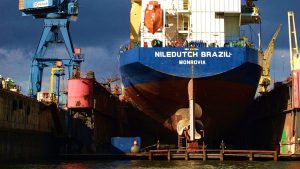
4. Completion: Quality Control, Final Inspections, Testing of All Systems, and Certifications
Completing a dry docking project in Cavite, Mindoro, and Cotabato involves several important steps to ensure quality control and the proper functioning of all systems. One crucial aspect is the final inspection, where all areas of the vessel are carefully examined for any potential issues or defects. This includes inspecting the hull, propellers, rudders, and other structural components. Through this thorough inspection process, any necessary repairs or adjustments can be made before the ship returns to service.
Testing all systems is another key element in completing a proper dry docking project. This involves checking and verifying the functionality of various onboard systems, such as electrical, mechanical, plumbing, and communication systems. Each system must undergo rigorous testing to ensure it is operating at optimal levels and meets industry standards.
Obtaining certifications is also an important part of completing a successful proper dry docking project in the Philippines. These certifications act as proof that all necessary safety measures have been implemented during the docking process. They validate that specific procedures have been followed and that the vessel meets regulatory requirements set by recognized maritime authorities.
Completion of a proper dry docking project entails quality control through final inspections and comprehensive testing of all systems on board. Obtaining relevant certifications further guarantees adherence to safety standards set by maritime authorities. By following these essential steps diligently, Filipino ship owners can trust that their vessels are well-maintained and seaworthy after undergoing dry dock repairs in the Philippines.

Exiting the Dry Dock and Returning to Service as Part of Proper Dry Docking Procedures in the Philippines
Exiting the dry dock and returning to service is an important step in proper dry docking. After several days or even weeks of repairs, maintenance, and inspections, the ship finally emerges from its temporary home on land. As it is prepared to return to the water, meticulous checks are carried out to ensure that every component is functioning properly.
The ship’s hull undergoes a thorough inspection for any signs of damage or corrosion that may have been missed during the proper dry docking process. Special attention is given to areas such as the rudder, propellers, and sea chests to ensure their optimal performance upon reentering the water. Additionally, various tests are conducted, including sea trials and engine functionality assessments, before giving the green light for departure.
During this critical phase of exiting the dry dock and returning to service, safety protocols must be observed without compromise. Every system onboard must be checked for proper functioning before leaving port. Crew members undergo rigorous training and emergency drills before departure in order to handle any potential issues that may arise once back at sea.
Overall, exiting the dry dock marks a significant milestone where a ship transitions from being inoperable due to repairs into being fully functional once again. It requires careful planning, attention to detail, and adherence to safety procedures for vessels in the Philippines – or anywhere else for that matter –to operate successfully after undergoing essential maintenance work onshore.
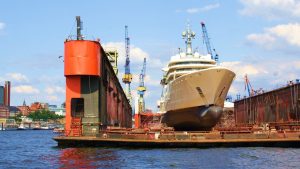
5. Post-Docking Maintenance and Repair Inspections: Maximizing Efficiency as Part of Proper Dry Docking Procedures
Post-docking maintenance and repair inspections are crucial for maximizing efficiency during the proper dry docking process in the Philippines. Once a vessel has been successfully docked, it is essential to conduct thorough inspections to identify any damage or potential issues that may have occurred during the docking procedure. This ensures that necessary repairs are promptly carried out before the vessel returns to service.
Inspections should encompass various aspects of the vessel, including its hull, propulsion system, electrical systems, and safety equipment. The hull must be carefully examined for signs of wear and tear, corrosion, or structural damage that could compromise its integrity. Similarly, the propulsion system needs to be inspected to ensure smooth operations and address any potential performance issues. Additionally, inspecting electrical systems is crucial for identifying faulty wiring or components that could pose a safety risk. By conducting comprehensive inspections after proper dry docking, Filipino operators can proactively address maintenance and repair needs before they escalate into more significant problems.
During post-docking inspections, it is crucial to thoroughly examine critical areas such as hulls, propellers, rudders, and other underwater components. Underwater cameras provide a clear visual representation of these areas, allowing inspectors to identify signs of corrosion, cracks, or other damages that may compromise the vessel’s performance and safety.
Moreover, adopting innovative approaches can further enhance post-docking maintenance and repair inspections in the Philippines. Utilizing advanced technologies like drones and underwater cameras can provide detailed visual assessments of hard-to-reach areas below water level without time-consuming manual inspections. Coupled with data analytics software capable of identifying patterns or anomalies in inspection results, these tools can streamline inspection processes while improving accuracy in detecting hidden damages or defects.
Post-docking maintenance and repair inspections are pivotal in maximizing efficiency as part of proper dry docking procedures in the Philippines. An extensive assessment of various components ensures prompt identification and resolution of any issues, preventing further damage or potential accidents. Regular inspections also help maintain the structural integrity of vessels and extend their overall lifespan.
Are You Looking for a Proper Dry Docking Company in the Philippines?
If you are in need of a dry docking company in the Philippines, look no further than Amaya Dockyard & Marine Services Inc. (ADMSI). With their expertise and experience, they provide proper dry docking procedures that ensure the longevity and efficiency of your vessel.
- Email us: info@amayadockyard.com
- Call our 24-hour hotline: +63 917 633 0479
- Viber: +63 917 633 0479
- WhatsApp: +63 917 633 0479
- Facebook Messenger: Click here
- Click here to inquire
One of the key advantages of choosing ADMSI is its cost-effective solutions. They understand that proper dry docking can be a significant investment for Filipino ship owners and operators, so they offer competitive rates without compromising quality. This ensures that you get the best value for your money while still receiving top-notch service.
Furthermore, ADMSI places great emphasis on safety during the dry docking process. They have a stringent set of procedures in place to ensure that all necessary precautions are taken to prevent accidents and minimize any potential risks. With ADMSI, you can have peace of mind knowing that your vessel is being handled with the utmost care and attention to detail.
If you are searching for a reliable, proper dry docking company in the Philippines, consider Amaya Dockyard & Marine Services Inc. Their proper dry docking procedures, cost-effective solutions, and commitment to safety make them an excellent choice for all your dry docking needs. Trust ADMSI to deliver exceptional results while keeping your vessel in optimal condition.
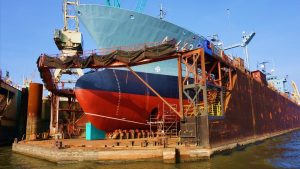
Final Word: 5 Proper Dry Docking Procedures in the Philippines
In conclusion, proper dry docking procedures in the Philippines require strict adherence to safety protocols and industry standards. It is crucial for Filipino ship owners and operators to understand the importance of proper preparation and planning before commencing any dry docking operation.
One major consideration is selecting a reputable shipyard that possesses the necessary facilities, equipment, and skilled workforce to handle different types of vessels. By doing so, Filipino ship owners can ensure that their vessels receive quality care during the docking process.
Furthermore, close communication between Filipino ship owners/operators and the shipyard is essential throughout the entire dry docking procedure. This ensures smooth coordination and avoids any delays or misunderstandings that may arise during the course of work.
Overall, by following these five proper dry docking procedures, from initial inspections to final sea trials, Filipino ship owners can effectively maintain their vessels’ operational efficiency while complying with national regulations. Proper implementation not only preserves a vessel’s structural integrity but also prolongs its lifespan, ensuring safe passage for crew members and cargo alike.

